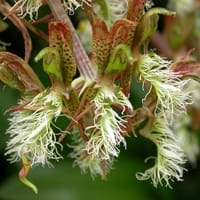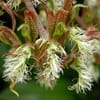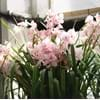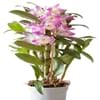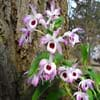Life Span
Perennial
Perennial
Origin
South America, Brazil
Europe, Eastern Europe, Northern Europe, Southern Europe, Western Europe, United Kingdom, Russia/Siberia, Mediterranean, Turkey, Northern Africa, Central Asia, Eastern Asia, Western Asia, India, Nepal, China, Japan, Korea
Types
Not Available
Bigleaf hydrangea, Hortensia, Smooth hydrangea, Oakleaf hydrangea, Annabelle
Number of Varieties
Not Available
Habitat
Warmer regions
Forest edges, Hillside, Woods
USDA Hardiness Zone
13-15
5-9
Sunset Zone
Not Available
Not Available
Habit
Clump-Forming
Weeping
Flower Color
Yellow, Green, Yellow green, Burgundy, Ivory
Yellow green
Flower Color Modifier
Multi-Color
Not Available
Fruit Color
Not Available
Not Available
Leaf Color in Spring
Not Available
Light Green, Yellow green
Leaf Color in Summer
Not Available
Green, Yellow green
Leaf Color in Fall
Not Available
Green, Yellow green
Leaf Color in Winter
Not Available
Olive, Yellow green
Leaf Shape
Long Linear
Oblovate
Plant Season
Spring, Summer
Spring, Summer, Fall, Winter
Sunlight
Partial Sun, Partial shade
Full Sun, Partial Sun
Type of Soil
Not Available
Not Available
The pH of Soil
Not Available
Not Available
Soil Drainage
Well drained
Not Available
Bloom Time
Spring, Late Spring, Early Summer, Summer, Late Summer
Early Spring, Spring, Late Winter
Tolerances
Not Available
Not Available
Where to Plant?
Ground
Container, Ground
How to Plant?
Seedlings
Seedlings, Stem Planting
Plant Maintenance
Medium
Medium
Watering Requirements
Requires watering in the growing season
Not Available
In Summer
Lots of watering
Average Water
In Spring
Moderate
Moderate
In Winter
Average Water
Average Water
Soil pH
Not Available
Not Available
Soil Type
Not Available
Not Available
Soil Drainage Capacity
Well drained
Not Available
Sun Exposure
Partial Sun, Partial shade
Full Sun, Partial Sun
Pruning
Not Available
Remove damaged leaves, Remove dead branches, Remove dead leaves
Fertilizers
All-Purpose Liquid Fertilizer
All-Purpose Liquid Fertilizer
Pests and Diseases
Red blotch
Red blotch
Plant Tolerance
Drought
Not Available
Flowers
Showy
Insignificant
Flower Petal Number
Single
Single
Foliage Texture
Medium
Medium
Foliage Sheen
Not Available
Matte
Attracts
Not Available
Birds
Allergy
Not Available
Chest tightness, Diarrhea, Dizziness, Nausea, Vomiting
Aesthetic Uses
Not Used For Aesthetic Purpose
Not Available
Beauty Benefits
Not Available
Not Available
Edible Uses
No
Not Available
Environmental Uses
Air purification
Air purification
Medicinal Uses
Not Available
Fever, Kidney problems, Urinary tract problems
Part of Plant Used
Not Available
Flowers, Root
Other Uses
Not Available
Not Available
Used As Indoor Plant
No
Not Available
Used As Outdoor Plant
Yes
Yes
Garden Design
Container, Hanging Basket, Houseplant, Tropical
Not Available
Botanical Name
CATASETUM barbatum
VISCUM album
Common Name
Bearded Catasetum Orchid, Orchid
European Mistletoe
In Hindi
bearded catasetum
Hydrangea
In German
bärtigen catasetum
Hortensie
In French
catasetum barbu
Hortensia
In Spanish
Catasetum barbudo
Hortensia
In Greek
γενειοφόρος catasetum
υδραγεία
In Portuguese
catasetum barbudo
Hortênsia
In Polish
brodaty catasetum
Hortensja
In Latin
Volunt barbati Catasetum
Hibiscus
Phylum
Tracheophyta
Not Available
Class
Liliopsida
Not Available
Order
Orchidales
Not Available
Family
Orchidaceae
Viscaceae
Genus
Catasetum
Not Available
Clade
Angiosperms, Monocots
Not Available
Tribe
Cymbidieae
Not Available
Subfamily
Epidendroideae
Not Available
Number of Species
Not Available
Properties of Bearded Catasetum and European Mistletoe
Wondering what are the properties of Bearded Catasetum and European Mistletoe? We provide you with everything About Bearded Catasetum and European Mistletoe. Bearded Catasetum doesn't have thorns and European Mistletoe doesn't have thorns. Also Bearded Catasetum does not have fragrant flowers. Bearded Catasetum has allergic reactions like Not Available and European Mistletoe has allergic reactions like Not Available. Compare all the properties and characteristics of these two plants. Find out which of these plant can be used as indoor plant. If you are interested to decorate your house and garden, find out aesthetic uses, compare them and select the plant which will beautify your surrounding. Along with beautification, try comparing medicinal and edible uses of Bearded Catasetum and European Mistletoe and you can choose the plant having best and most benefits.
Season and Care of Bearded Catasetum and European Mistletoe
Season and care of Bearded Catasetum and European Mistletoe is important to know. While considering everything about Bearded Catasetum and European Mistletoe Care, growing season is an essential factor. Bearded Catasetum season is Spring and Summer and European Mistletoe season is Spring and Summer. The type of soil for Bearded Catasetum is Not Available and for European Mistletoe is Not Available while the PH of soil for Bearded Catasetum is Not Available and for European Mistletoe is Not Available.
Bearded Catasetum and European Mistletoe Physical Information
Bearded Catasetum and European Mistletoe physical information is very important for comparison. Bearded Catasetum height is 35.50 cm and width 40.60 cm whereas European Mistletoe height is 60.00 cm and width 60.00 cm. The color specification of Bearded Catasetum and European Mistletoe are as follows:
Bearded Catasetum flower color: Yellow, Green, Yellow green, Burgundy and Ivory
Bearded Catasetum leaf color: Not Available
European Mistletoe flower color: Yellow green
- European Mistletoe leaf color: Light Green and Yellow green
Care of Bearded Catasetum and European Mistletoe
Care of Bearded Catasetum and European Mistletoe include pruning, fertilizers, watering etc. Bearded Catasetum pruning is done Not Available and European Mistletoe pruning is done Remove damaged leaves, Remove dead branches and Remove dead leaves. In summer Bearded Catasetum needs Lots of watering and in winter, it needs Average Water. Whereas, in summer European Mistletoe needs Average Water and in winter, it needs Average Water.
